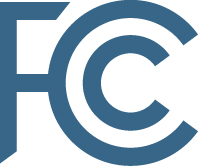 We recently spoke at one of the largest federal mapping data events, the ESRI Federal Users Conference, where we presented a cool implementation of FCC APIs mashed up with other, powerful datasets.
We recently spoke at one of the largest federal mapping data events, the ESRI Federal Users Conference, where we presented a cool implementation of FCC APIs mashed up with other, powerful datasets.
Last Spring, the FCC launched a pioneering crowd-sourced data collection tool: the FCC Consumer Broadband Speed Test. Since then, the test has been run more than 1 million times, collecting results both from wired and wireless connections. This is real data, from real consumers, in real communities. To make the data more useful, we released an API to unlock those results and hand the keys to the developer community.
The presentation showed that crowd-sourcing data collections can yield great things—not just for agencies—but for developers in the private and public sectors that can take the data and build new products, services, and research.
By the numbers alone, we know the test has been popular. And for a crowd-sourced federal data container, we think it's a huge success.
The particularly exciting part of this presentation was the ability to display projected speeds at different geographies within standard error, all extrapolated out from the the speed test data points that were input by users. As we explain in the video, by using the 1 million+ records submitted by users, we were able to display a map that shows the probability of a certain level of mobile broadband speed at any given spot in the U.S.
These data sets are great tools at our disposal, especially in the run up to the release of the National Broadband Map. As we get closer to the product launch in February, watch this space for updates of interest to developers, geographers, and consumers.
We're interested to know what you think about the results, and what other uses for these datasets and APIs you come up with. Watch the video below of the presentation, then leave your comments.